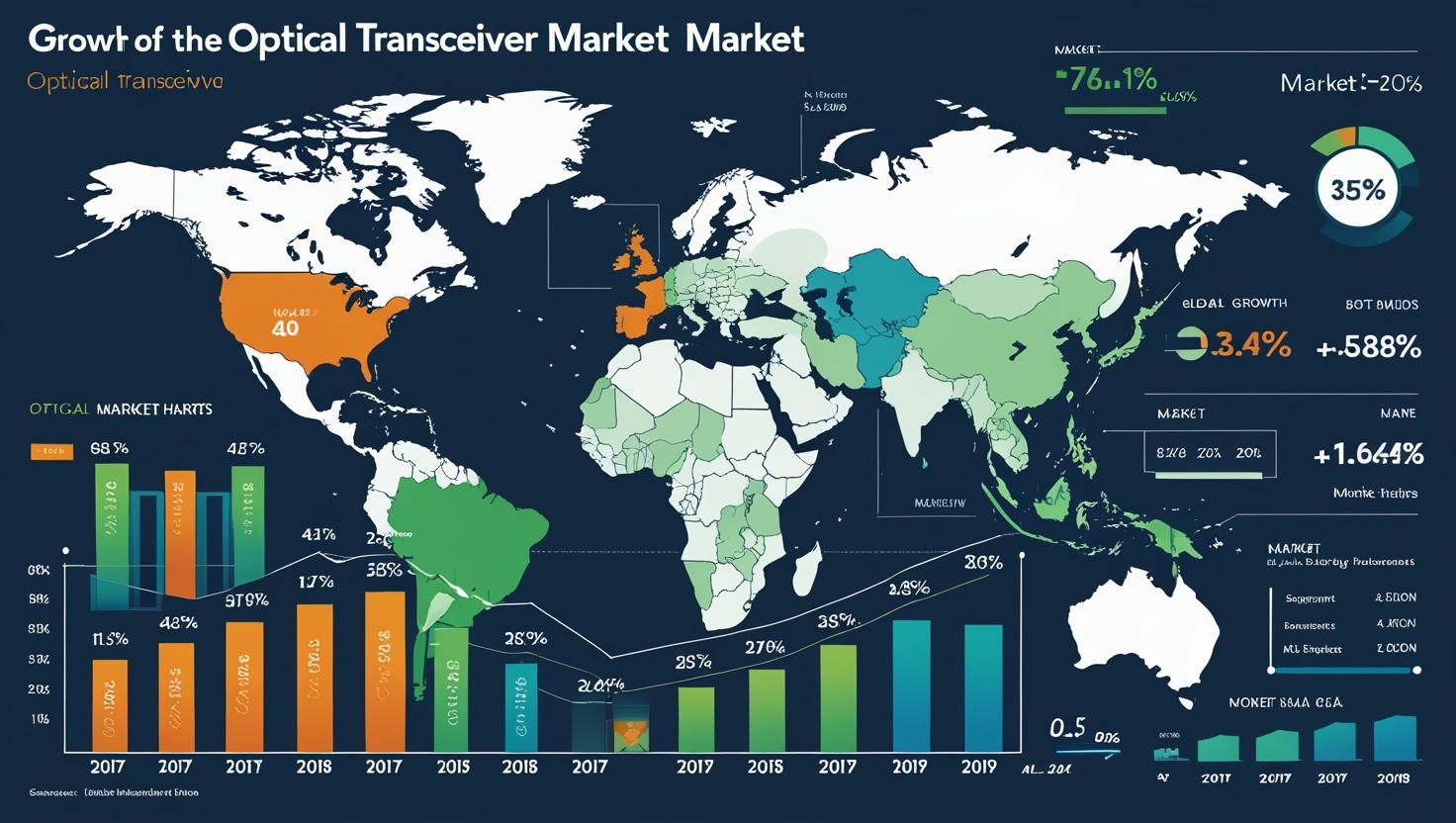In a world defined by lightning-fast communication and data-driven innovation, optical transceivers have become silent enablers of our connected lives. From streaming high-definition video to enabling real-time AI processing and powering 5G networks, these compact components are at the heart of the global digital infrastructure.
As global internet traffic surges, data centers scale rapidly, and telecom networks expand to support emerging technologies, the optical transceiver market is set to play a pivotal role in the next generation of global connectivity.
What Are Optical Transceivers?
An optical transceiver is a device that transmits and receives data over optical fiber. It converts electrical signals into optical signals and vice versa, allowing high-speed, long-distance communication. Optical transceivers are essential for data centers, telecom infrastructure, enterprise networks, and cloud computing—enabling scalable, reliable, and ultra-fast connections.
Growing Demand Driven by Data
The explosion of global data—driven by cloud computing, AI, IoT, and streaming—has made high-capacity, low-latency connections a top priority. Data centers, which serve as the digital hubs of the modern economy, are investing in 100G, 400G, and even 800G optical transceivers to manage growing workloads efficiently.
The optical transceiver industry size is valued at USD 13.6 billion in 2024 and is expected to reach USD 25.0 billion by 2029, growing at a CAGR of 13.0% from 2024 to 2029, fueled by demand from hyperscale data centers and the rapid global rollout of 5G networks.
Enabling 5G and Beyond
As telecom providers deploy 5G infrastructure, the need for high-speed backhaul and fronthaul connections is driving massive investment in fiber and optical components. Optical transceivers ensure that the data generated by millions of connected devices—phones, autonomous vehicles, smart cities—is transmitted seamlessly across networks with minimal delay.
With the transition to Open RAN (Radio Access Networks) and edge computing, flexible and high-performance optical solutions will be critical in supporting latency-sensitive applications like autonomous driving, virtual reality, and remote surgery.
Download PDF Brochure @ https://www.marketsandmarkets.com/pdfdownloadNew.asp?id=161339599

The Shift to High-Speed and Advanced Form Factors
The industry is rapidly transitioning from legacy speeds (10G and 40G) to 400G and 800G modules that support modern workloads. This shift is being enabled by innovations such as co-packaged optics, silicon photonics, and PAM4 modulation—which increase bandwidth while reducing power consumption and heat.
Compact form factors like QSFP-DD, OSFP, and SFP56-DD are becoming standard, allowing dense deployments in modern switch and router designs. These advances are critical for maximizing rack space and minimizing energy usage in hyperscale environments.
Regional and Industry-Wide Growth
-
North America leads the market due to the presence of major cloud service providers and early adoption of 5G.
-
Asia-Pacific, especially China, South Korea, and Japan, is experiencing rapid growth driven by massive telecom and enterprise network expansions.
-
Europe is witnessing steady adoption as investments in smart infrastructure and green data centers increase.
The demand spans sectors beyond telecom and cloud—financial services, healthcare, manufacturing, and government agencies are all upgrading their network backbones with next-gen optical solutions.
Challenges and Opportunities
Despite its growth, the optical transceiver market faces challenges such as:
-
Supply chain disruptions and chip shortages
-
High R&D costs associated with new form factors and standards
-
Interoperability concerns among multi-vendor ecosystems
However, these challenges also present opportunities for standardization, open networking, and collaborative innovation across the ecosystem.
What’s Next?
The next wave of optical innovation will focus on AI-optimized networking, energy-efficient design, and intelligent transceivers that can self-monitor performance and adapt in real time.
As the world moves toward ubiquitous connectivity, optical transceivers will be the foundation of digital infrastructure—delivering the speed, scale, and reliability that the future demands.
From enabling 5G and AI to powering the cloud, optical transceivers are no longer just components—they’re catalysts for global digital transformation. As data volumes grow and network expectations rise, these tiny devices will remain essential to bridging distances, accelerating innovation, and powering the next wave of global connectivity.
1. Where are optical transceivers used?
Optical transceivers are widely used in:
-
Data centers
-
Telecommunication networks (especially 5G)
-
Enterprise and campus networks
-
Cloud computing and hyperscale environments
-
AI, machine learning, and high-performance computing infrastructures
2. Why are optical transceivers important for global connectivity?
They form the backbone of high-speed internet infrastructure, enabling seamless data transfer across long distances with minimal latency. As demand for bandwidth grows (from streaming, cloud services, IoT, and AI), transceivers ensure networks can keep up.
3. What are the main types of optical transceivers?
Common types include:
-
SFP (Small Form-factor Pluggable)
-
QSFP (Quad Small Form-factor Pluggable)
-
QSFP-DD (Double Density)
-
OSFP (Octal Small Form-factor Pluggable)
These vary in speed, form factor, and application.
4. What speeds do modern optical transceivers support?
Today’s transceivers support a wide range of speeds:
-
10G, 25G, 40G, 100G
-
400G and 800G for hyperscale and next-gen networks
Future innovations may even surpass 1.6 Tbps.
